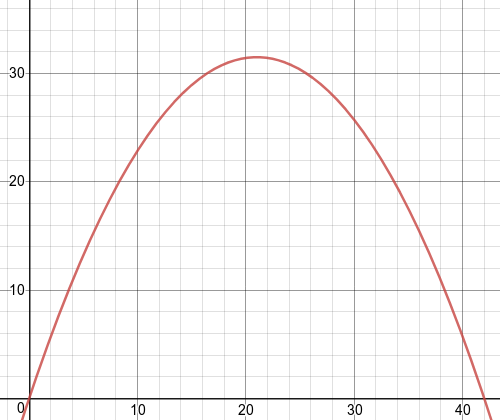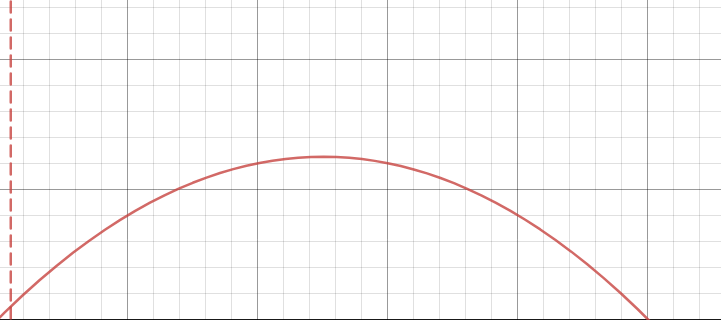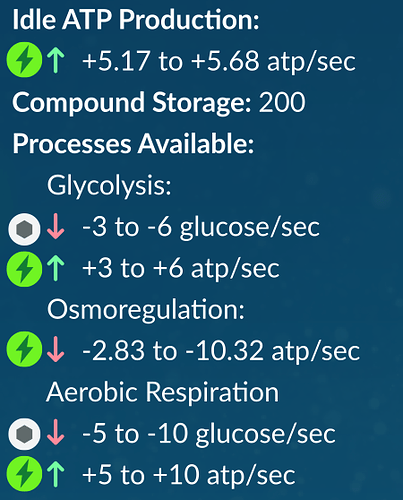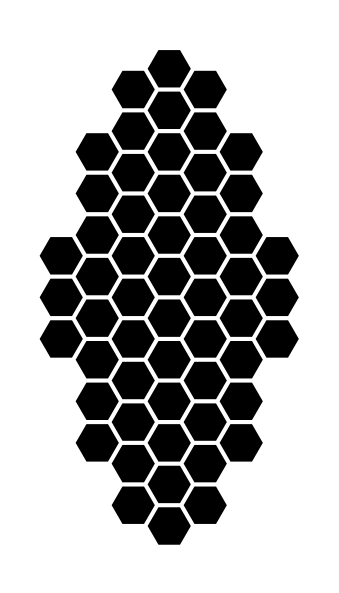Continuing a discussion from the Discord:
Me and @tjwhale have been trying to figure out how to reasonably balance Glycolysis and Osmoregulation so that they both fairly limit the size and complexity of organisms lacking a Mitochondrion, Aerobic Respiration Proteins, or any more efficient means of producing ATP. (I’m not sure if there are any)
To summarize, TJWhale has had a couple ideas for how costs for both processes could scale with microbe size: the amount of ATP produced per second by Glycolysis could scale linearly with the amount of Cytoplasm in a cell, while the ATP costs of Osmoregulation would increase quadratically. This would result in an increase and then eventual decrease in net ATP production as more Cytoplasm is added to the cell, until at some point the cell becomes too large to produce enough ATP to completely fuel Osmoregulation along with its other processes and activities.
Below is a graph depicting how net ATP production changes with size:
x = number of hexes in cell, assuming all are cytoplasm
y = ATP cost of Osmoregulation subtracted from ATP production of Glycolysis
I also made a thing on Desmos that allows you to tweak the different values going into the equation, including how many non-cytoplasm hexes a cell has, whether or not they perform a limited form of Glycolysis as well and how efficient that is, how many mitochondria it has and how much energy each mitochondrion produces, etc… https://www.desmos.com/calculator/5tqxojq1i3
His other suggestion was that Osmoregulation could be linear, simply based on the total amount of hexes in a cell, and instead Glycolysis itself would decrease in efficiency as more and more Cytoplasm is added, as in this formula where c is the number of hexes of cytoplasm and n is the number of hexes of non-cytoplasm.
4c - (1/14)(c^2) - c - n

Whichever sort of formula we decide on, in my opinion the curve it generates should be rather small and flat, so that cells relying on Glycolysis will be limited to a fairly small size and low ATP production. I believe we also need to be sure that adding a few non-Cytoplasm hexes won’t starve a small cell. Since we eventually plan for our starting cell to be a single hex of cytoplasm, adding a protein to that single hex shouldn’t completely disable Glycolysis.
Along with Glycolysis, we also need to determine how effective Mitochondria and Aerobic Proteins are so that they aren’t too overpowered or underpowered, and we also need to keep in mind how much Glucose and other Compounds all these processes are using, and whether a cell will be able to even collect and hold that much.
What do you guys think? @tjwhale anything to add?



